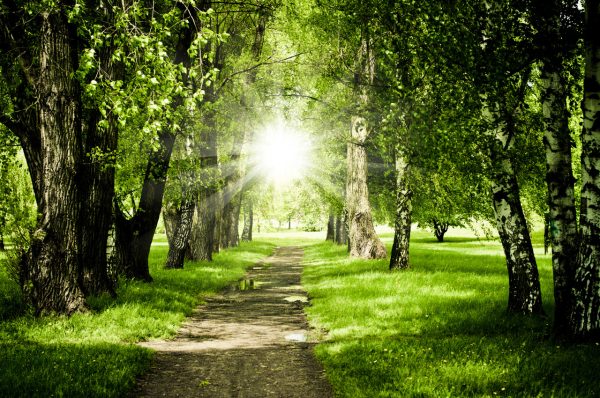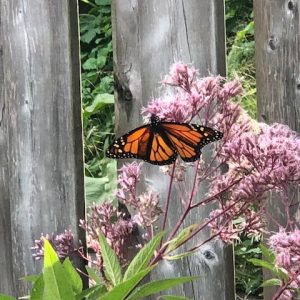Nearly twenty years have passed since I completed the experiment in joy that changed my life, which I wrote about in my book Champagne for the Soul. Sometimes I’m asked whether the joy I discovered back in 1999 really has continued, every day, down to this present day. The answer is yes, and I want to say something about how this works in practice.
In simple terms, life is lived on two levels, outer and inner. The outer, which might be compared to the ocean, consists of all the events of daily life and our thoughts about them, while the inner, which corresponds to the ocean floor, is the ground of our being, our innermost soul. Already, from this comparison, it may be seen which of these two realities is stable, and which unstable.
Joy does not derive from that which is unstable, but only from the place of deep stability. When one becomes a Christian, the Holy Spirit, who is the Joy-Giver, comes to dwell in one’s innermost being. The Spirit may touch the outer life in many ways, but He does not dwell there. To connect with joy, one must connect with the innermost being.
Most people are not in touch with their innermost being. On the other hand, the innermost being is frequently in touch with us. I believe this is true even in cases of severe depression. What I mean is that God is always communicating with our souls, not only from deep within, but also through external phenomena such as nature, art, people, random events. To be alive in this marvelous world is to experience, perhaps rarely, perhaps daily, touches of grace: moments when the path to our innermost being opens up and out spills light, peace, beauty, joy, or an experience of mysterious connection. Living in joy requires paying attention to such moments and having the wisdom and humility to cultivate them.
In the previous paragraph, I imagined a path between the outer and inner worlds. Let’s make this path even more visual by picturing it as leading from a busy town into a beautiful clearing in the neighboring forest. Sadly, many people do not know that this path exists. Many others, for various reasons, hardly ever take the trouble to follow the path, for whenever they try, they find it littered with obstacles: boulders, fallen trees, brigands, perhaps even goblins and ogres. Better to stay in the protected town where there’s always plenty to do.
The problem is that joy—real, lasting joy—can only be found in the beautiful clearing in the forest. To be happy—truly happy—one must clear all the obstacles from the path and get to the clearing. It is not necessary to abandon life in the town, but it is necessary to visit the clearing regularly. It is necessary to learn to integrate the two worlds.
What kind of work needs to be done to clear the path? This apparently complex work may be summed up by two simple words: Forgiveness and Acceptance. First, remove the great fallen logs from your path by forgiving all those who have hurt you, beginning with those closest to you. For many people, the biggest turning point in life results from forgiving their parents. Notice, incidentally, that this step implies surrendering all anger, resentment, enmity. Sounds like a tall order, but it’s no more than what the New Testament commands: “Get rid of all bitterness, rage and anger, brawling and slander, along with every form of malice” (Eph 4:31).
Secondly, practice acceptance. Accept God. Accept Jesus Christ. Accept yourself, just the way you are. Accept your problems. Accept whatever happens today. Accept all the evil in the world. Accept the necessity of suffering. Accept everything you presently resist, complain about, rail against. Such acceptance, by the way, does not mean that you might not try to change some things. But you cannot change anything that you do not first accept. Change begins with acceptance.
So: Accept everything, not grudgingly, but with open arms as you would a dear friend. Why? Because this is your life, the only life you have. This is you. To fully love God, and to love His great gift of yourself, you must accept this one life of yours, with all its troubles, as a rich treasure. From such acceptance you will arise like a champion rejoicing to run your course. This is your path to the beautiful clearing deep in the forest. This is the way to your innermost being, the abode of joy, where dwells “Christ in you, the hope of glory” (Col 1:27).
I like the word hope. Hope is a very powerful quality, much more so than we may realize. It’s one of the three eternal graces listed by Paul in 1 Corinthians 13:13: “And now these three remain: faith, hope, and love.”
Yes, I have learned to live in joy. For nearly twenty years I have had joy every day, because every day I spend time in the clearing in the forest. It’s my favorite place. I can go there whenever I want, because with God’s help I have cleared the path. There are no obstructions between me and joy. The way is open, and what happens in the clearing colors all the rest of my external life.
In short, I’m a happy man. Does this mean I feel happy all the time? No, in my outer life I have problems, upsets, pain, worries, struggles. In the midst of these I may not always feel happy. But I’m always hopey. That is, at the deepest level I have joy, and in the unstable outside world I have hope. And hope is like my beating heart: It’s what gives me the energy to keep putting one foot in front of the other as I travel back and forth along the path, living my life.
Next Post: The Person From Porlock: How Interruptible Are You?





